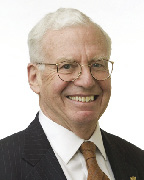In Boston, where a reported billion dollar transaction for the Hancock Building is pending, underwriting vacancy in commercial real estate has become a major challenge for investors in this sluggish market. The counselors will meet in Philadelphia October 17th - 20th, for their annual convention to sort out the data and exchange some sensible and collegial iterations. Practically speaking, Mark Zandi of Moody's will shed some light on vacancy by examining the current and prospective job market, the main driver for commercial real estate. Counselors will lead Business Issues panels including appraising property in a distressed market which will examine the selection of data and methodology for current and prospective market conditions.
The very gradual pace of recovery and existing overhanging vacancy in many of the local submarkets has provoked pundits to wonder if we the next building cycle will be a cycle without building, similar to the current economic recovery without jobs. However, analyzing the upside in the vacancy is essential to understanding the sustainability of the property and its occupancy. Vacancy of 20%, plus or minus, with millions of square feet available for lease is alarming and underlines the risk as well as the potential reward in our local markets.
The definition of the competitive market and market position for a property is important to analyzing the risk as well as the reward. Classification or stratification of the relevant competitive market by location, quality, rent, size, and services is the first or second step. The downtown market has identified the class B inventory for decades. The Cambridge market has recently bifurcated the bio-lab market by age and quality. The warehouse market has segregated the 30' high-bay inventory since its introduction to the market. Determining market position of the property by comparative analysis within the competitive market is the next step in an iterative process that defines the risk. Absorption, rate and capacity, is the final ingredient to making assumptions for underwriting the vacancy. The rollover dynamic and downsizing trends are local ingredients that must be considered with local economic prospects and employment outlook.
The Philadelphia CRE roundup is timely both because of recent market activity and the prospects for a continuing depressed market. Mark Zandi is one of the most thoughtful and communicative economists on the watch, and he has consistently made a special effort to bring the global economy and capital markets down to the level of domestic commercial real estate markets. Peter Korpacz, CRE and Richard Marchitelli, CRE of Cushman & Wakefield will discuss cap rates and valuation in distressed markets. To the Boston properties and Boston investors that are sure to be mentioned throughout the meeting, the CRE's have added a general session on the gaming industry and casino development. Grab your bags! It's on!
David Kirk, CRE, MAI., FRICS, is principal and founder of Kirk & Company, Real Estate Counselors of Boston.
Tags:









